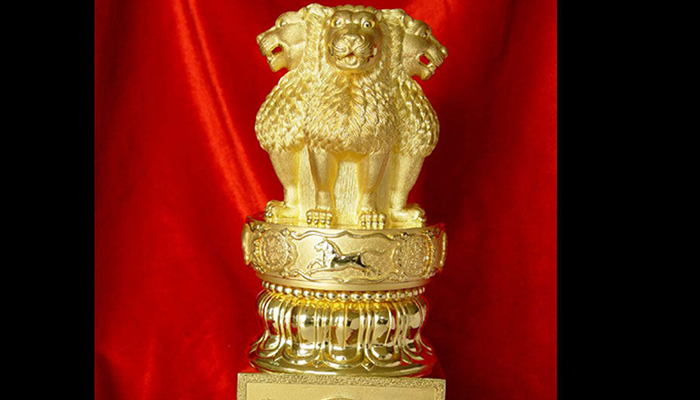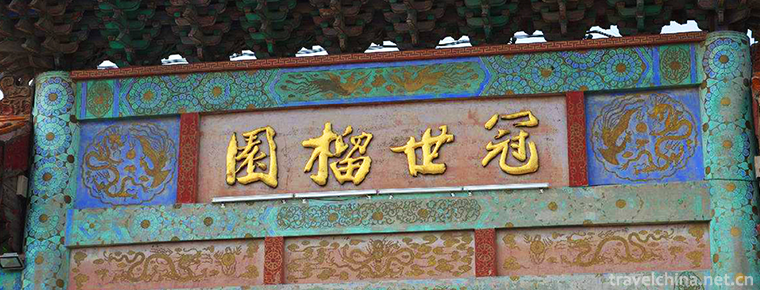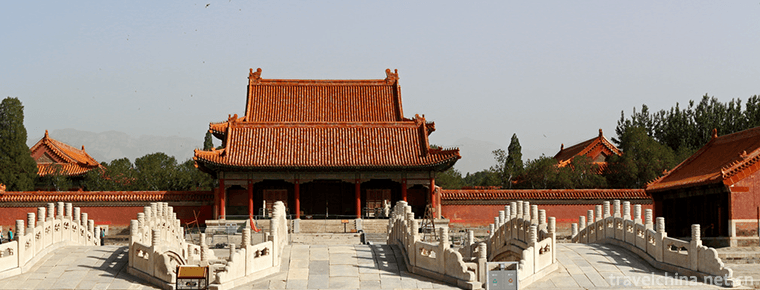Gold and Silver Fine Craft
Gold and Silver Fine Craft
Gold and silver fine craftsmanship, Huangpu District of Shanghai, Nanjing City of Jiangsu, Jiangdu traditional handicraft, one of the national intangible cultural heritage.
Gold and silver fine workmanship requires a series of processes, such as drawing, sculpture, turning over, assembling, welding, gluing, painting, surface treatment, cloisonne, mosaic and assembly, to produce finished products.
On June 7, 2008, gold and silver fine craftsmanship was approved by the State Council of the People's Republic of China to be included in the second batch of national intangible cultural heritage list, the project number is_-117.
historical origin
Gold and silver fine craftsmanship originated in the Han Dynasty, flourished in the Tang and Song Dynasties, and flourished in the Ming and Qing Dynasties.
According to the "Grand View of National Treasure", there are "Golden Seal of Guangling King" and more than ten pieces of small gold ornaments made in the tomb of Liu Jing, Guangling King of the Eastern Han Dynasty in Hangjiang, Jiangsu Province. From these products, we can see that the gold and silver fine workmanship such as hammering, stranding, reeling, frying beads, welding, mosaic and so on was very mature at that time.
The Tang Dynasty was a flourishing period of Chinese gold and silver production, and Yangzhou at that time had become the trading center of gold and silver ware. This can be seen from Du Mu's poems such as "Golden Row Carved, Luhuan Picked up Cui Lai" in "Three Poems of Yangzhou". In the New Tang Book, there are special records of handicraft industries such as gold and silver making in Yangzhou.
In the Ming and Qing dynasties, the traditional gold and silver jewelry crafts in Jiangdu developed rapidly. During the Republic of China, gold and silver jewelry prevailed in Jiangdu. There were more than 30 silver stores. They mainly made various kinds of gold and silver jewelry, including rings, necklaces, long-life locks, ear pliers, bracelets, etc. They also made high-grade jewelry inlaid with pearls, agate and emerald.
In 1971, the Ministry of Light Industry of China deployed to resume the development of export jewelry production. In 1972, Jiangdu set up a metalworking factory. 32 gold and silver craftsmen were invited from Shanghai, together with dozens of local craftsmen in Yangzhou, which opened a new chapter in the inheritance of fine gold and silver industry in Jiangdu.
Process characteristics
Gold and silver fine works mainly include gold and silver jewelry, gold and silver ornaments, gold and silver utensils and gold and silver ornaments. The process includes design drawing, proportioning and pressing, sculpture moulding, group welding and sculpture, surface treatment (including sand blasting, whitening and blueing, brushing, blackening, silver plating, gold plating, polishing cleaning, drying), inlaying, assembling, mounting, base, packaging, etc. The unique techniques are potted flower and polishing. Its main production tools are smelting tools, batching tools, carving tools, welding tools, plastic tools, polishing tools, blue burning tools and related accessories.
The fine-working technology of gold and silver inherits the ancient Chinese gold and silver jewelry production technology, the ancient crucible melting technology, carving and carving technology and polishing technology of Yangzhou bronze mirror. On the whole, the works present a unique style of "elegance, exquisiteness, elegance and vulgarity, rigidity and softness", with fine decoration and exquisite patterns.
Gold and silver fine workmanship is developed from China's long history of metal technology, which accumulates China's advanced cultural ideas and excellent technology, and also forms its own unique technological characteristics. After a long period of artistic practice, craftsmen gradually formed a precise, accurate and beautiful style in the inheritance of gold and silver fine workmanship.
"Fine" mainly refers to fine, which is also the main feature of gold and silver fine workmanship. If it does not reach a certain degree of precision, fine workmanship can not be called fine workmanship. Some fine workmanship pieces are as thin as cicada wings, decorative carvings are as fine as hair, and the production is extremely delicate and meticulous, which is incomparable with other crafts. The fineness of the decoration process depends on the artist's superb craftsmanship on the one hand, and on the other hand, the exquisite fine tools. In the sculpture pattern of the chips, most of the patterns are difficult to see with the naked eye, and can only be seen with the help of a magnifying glass.
"Accuracy" mainly refers to the accuracy of the shape of the work, the decorative structure in place, and the lifelike manner. In Fine-Work production, the accuracy of the structure of the work is achieved by the accumulation of many years'experience of craftsmen, rather than by careful calculation of the database. For example, "Hualong Tower" is a fine ornament, each layer of the tower is an octahedron, and the octahedron is welded from eight plates. If the welding position of one plate is inaccurate in the manufacturing process, the whole tower layer will not achieve the desired effect.
"Beauty" mainly refers to the handicraft who can effectively grasp the material in the production, and can stimulate the inherent simplicity and tenacity of metal materials, reflecting the idea of "artistic and skillful material" in handicraft. In the sculpture of articles, we should follow the principles of complete form, similarity between static and dynamic, pun in meaning, exquisite and diverse creation, and follow the rules of clear primary and secondary, full and orderly in handling methods.
Inheritance and protection
Inheritance value
The fine arts of gold and silver are an important part of traditional national culture. They are not only precious scientific heritage, but also the carrier of technological genes. Their works take into account both technical and artistic qualities, and are important intangible cultural heritage.
The fine arts of gold and silver have a long history. In the process of inheritance, they have historicity and modernity with the changes of the times. They are the manifestation of modern life culture. They also indirectly reflect the development of culture and times, the needs and features of society. Their themes, decorations and shapes reflect the aesthetic taste and life aspirations of the times.
Traditional fine arts of gold and silver are closely related to people's daily life, involving all aspects of clothing, food, shelter and daily necessities, such as handicraft, jewelry, daily necessities, etc. Users have dignitaries, but also ordinary people. Works from craft decoration to silver pot to jewelry, both practical and artistic values, to meet cultural and spiritual needs.
Inheriting characters
Wang Dianxiang, male, born in October 1939, is the representative successor of the third batch of state-level intangible cultural heritage projects. Nanjing, Jiangsu Province, declares the project: gold and silver fine craftsmanship.
Zhang Xinyi, male, born on February 8, 1958, is the representative successor of the fourth batch of state-level intangible cultural heritage projects. He declared the project in Huangpu District, Shanghai: gold and silver fine craftsmanship.
Fang Xuebin, male, born in January 1956, is the representative successor of the fifth batch of state-level intangible cultural heritage projects. Jiangdu City, Jiangsu Province, declares the project: Fine-Work production skills of gold and silver.
protective measures
In March 2007, the gold and silver fine crafts were listed in the first batch of intangible cultural heritage list of Jiangsu Province by Jiangsu Provincial People's Government.
In June 2008, the fine-working techniques of gold and silver were listed in the second batch of national intangible cultural heritage list by the State Council of the People's Republic of China.
In 2009, Fang Xuebin, the representative inheritor of the national intangible cultural heritage project, established Fangyuan Metal Art Studio to create metal crafts and protect the inheritance of gold and silver fine workers.
In September 2013, Nanjing Baoqing Jewelry Company was recognized as the city-level gold and silver Fine-Work production technology inheritance base by Nanjing Wenguang New Bureau.
On May 24, 2018, the fine-working techniques of gold and silver were listed by the Ministry of Culture of the People's Republic of China in the first batch of national traditional crafts revitalization catalogue.
social influence
Important exhibition
On October 29, 2015, the 16th China Arts and Crafts Master Works and International Art Exhibition, co-sponsored by Yangzhou Municipal Government, China Arts and Crafts Association and China Arts and Crafts (Group) Company, opened in Yangzhou, in which the gold and silver fine work "Dragon Boat of the Great Sui Dynasty" was displayed.


Gold and Silver Fine Craft
-
The Siberian Tiger Park
Located on the North Bank of Songhua River, the Northeast Tiger Forest Park covers an area of 1.44 million square meters and is adjacent to the Sun Island Scenic Area. Among them
Views: 205 Time 2018-12-19 -
two dragons mountain Erlongshan
Erlongshan is the first national AAAA class tourist area, known as "Harbin East Garden", located 50 km east of Harbin, 127 degrees east longitude 27 minutes 41 seconds, 45 degrees north lati
Views: 190 Time 2018-12-22 -
Guanshi Pomegranate Garden Eco cultural Tourist Area
Guanshi Pomegranate Garden Eco-cultural Tourist Area is located in the south of Zaozhuang City, Shandong Province, and in the west of Fucheng District. It is 22.5 kilometers long in East and 22.5 kilo
Views: 174 Time 2018-12-26 -
Western Royal Tombs of the Qing Dynasty
Xiling Tomb of Qing Dynasty is located at the foot of Yongning Mountain, 15 kilometers west of Yixian Town, Baoding City, Hebei Province, more than 120 kilometers away from Beijing
Views: 239 Time 2019-02-07 -
Saint Sophia Cathedral in Harbin
St. Sophia Church is located in Sophia Square, Daoli District, Harbin City, Heilongjiang Province, China. It is a Byzantine-style Orthodox Church built in 1907
Views: 203 Time 2019-02-08 -
Eight Diagrams Palm
The Eight Diagrams Palm, also known as the Traveling Eight Diagrams Palm and the Eight Diagrams Linked Palm, is a traditional Chinese boxing with the main changes of palm method and walking.
Views: 202 Time 2019-04-02 -
Gongs and drums
The Gong and drum books used to be called "Taibaoshu", "Taibao" is derived from the activities of "Taibu" in the countryside of Shanghai suburbs and counties, which seeks
Views: 144 Time 2019-05-15 -
Mazu memorial ceremony
Mazu Festival, which originated in Song Dynasty, experienced Yuan, Ming and Qing dynasties and continued to expand and enrich. By the Qing Dynasty, Mazu was named "Tianhou", and the title re
Views: 232 Time 2019-05-15 -
Nanping Nanci
Nanping Southern Ci is a traditional form of music popular in Nanping, northern Fujian Province. It is generally believed that the Southern Ci in Jiangnan area developed gradually with the local tradi
Views: 305 Time 2019-06-07 -
Siguniang Mountain Scenic Area
Siguniangshan scenic area, located in Siguniangshan Town, Xiaojin County, Aba Tibetan and Qiang Autonomous Prefecture, Sichuan Province, belongs to Qionglai mountain range of Qinghai Tibet Plateau, 220 km away from Chengdu.
Views: 185 Time 2020-11-06 -
Leshan tertiary industry
In 2019, the total retail sales of social consumer goods in Leshan City reached 73.87 billion yuan, an increase of 10.7% over the previous year. According to the statistics of places of operation, the retail sales of consumer goods in cities and towns
Views: 386 Time 2020-12-17 -
Dazhou Technology
In 2019, Dazhou has 66 national high-tech enterprises, and the main business income of high-tech industry is 34 billion yuan. There are 1 national level maker space and 1 star innovation space, 6 provincial science and technology enterprise incubators
Views: 206 Time 2020-12-20









